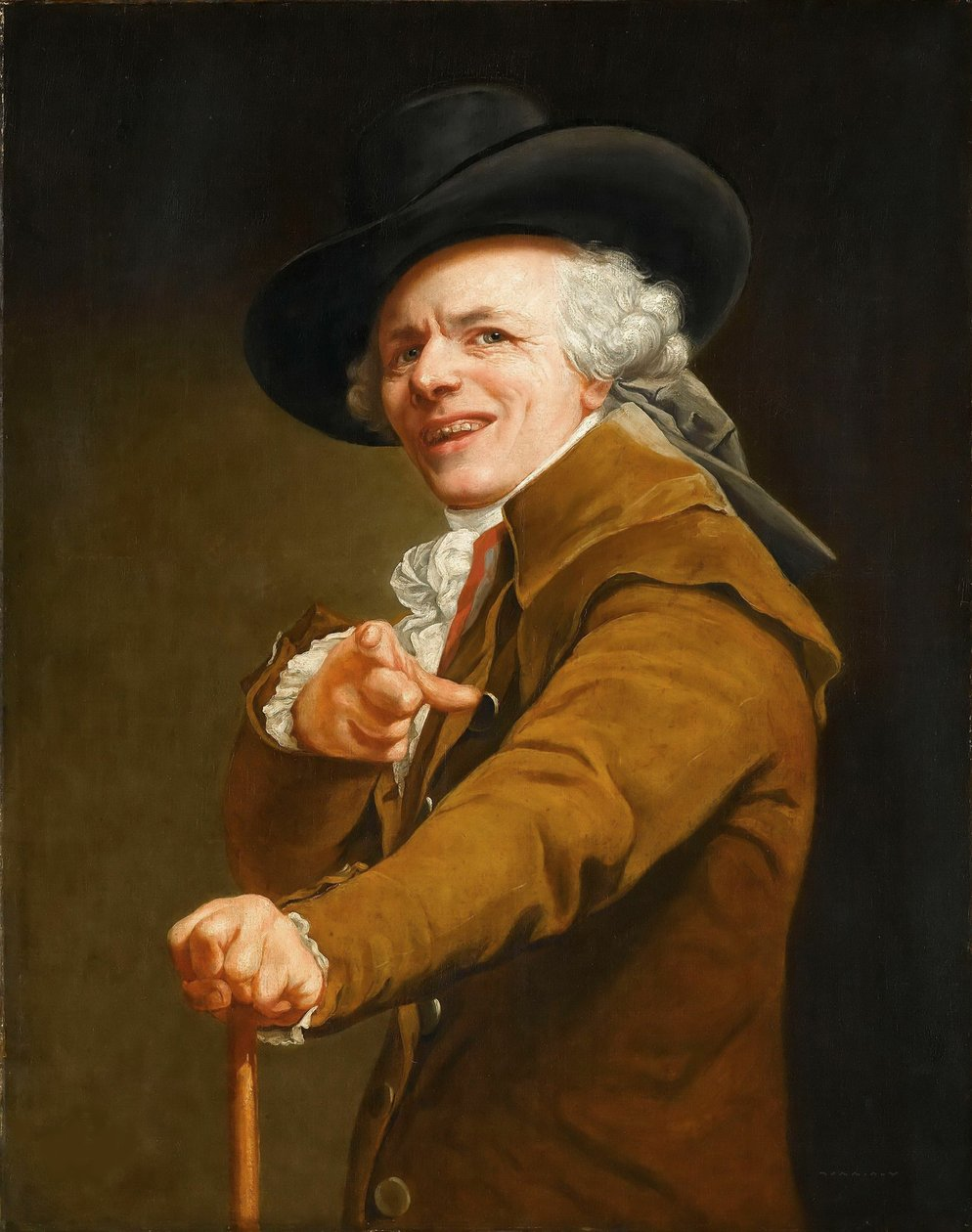Joseph Ducreux, a notable French painter of the 18th century, stands out in art history for his unique and often humorous self-portraits. Born on June 26, 1735, in Nancy, France, Ducreux carved a niche for himself through his unconventional approach to portraiture, which broke away from the rigid formalism typical of his time. His works not only reflect his skill as an artist but also offer a glimpse into his playful and expressive personality, marking him as a distinctive figure in the landscape of Enlightenment art.
Early Life and Training
Ducreux's early life and training laid a solid foundation for his artistic career. He studied under Maurice Quentin de La Tour, a prominent pastelist of the Rococo period. Under La Tour's mentorship, Ducreux honed his skills in capturing intricate details and subtle expressions, traits that would later define his signature style. His proficiency quickly earned him recognition, and he moved to Paris to further his career.
Royal Patronage and Success
Ducreux's big break came when he was appointed as the official portraitist to Queen Marie Antoinette in 1769. His task was to create a detailed portrait of the queen to be sent to King Louis XVI before their marriage. This commission marked the beginning of Ducreux's association with the French royal court and significantly boosted his reputation.
Despite his association with the aristocracy, Ducreux's work did not always adhere to the conventions of court portraiture. While he produced formal portraits that displayed the grandeur and elegance expected by his patrons, it was his self-portraits that showcased his innovative spirit and distinguished him from his contemporaries.
The Unorthodox Self-Portraits
Joseph Ducreux is best remembered today for his series of self-portraits, which diverge sharply from the traditional, stoic representations of the era. These portraits often depict him in exaggerated, almost theatrical poses, with a variety of facial expressions ranging from surprise to laughter. This approach was revolutionary, as it injected a sense of personality and humor into portraiture, challenging the norms of his time.
One of his most famous works, "Self-Portrait, Yawning" (1783), exemplifies this departure from convention. The painting captures Ducreux mid-yawn, with his mouth wide open and eyes half-closed, in a moment of vulnerability and spontaneity rarely seen in 18th-century art. This piece not only highlights his technical prowess but also his willingness to explore human emotion and expression in a candid manner.
Self-Portrait, Yawning - by 1783
Joseph Ducreux (French, 1735 - 1802)
Another notable work, "Self-Portrait as a Mocker" (1783), shows Ducreux pointing at the viewer with a mischievous grin, as if sharing an inside joke. This playful engagement with the audience was unprecedented and demonstrated his desire to connect with viewers on a more personal level.
Self-portrait of the artist in the guise of a mocker, c. 1793
Legacy and Influence
Ducreux's self-portraits gained renewed attention in the 21st century, thanks in part to the internet and meme culture. His expressive and relatable depictions have been widely shared and repurposed in various digital formats, bringing his work to a global audience and highlighting the timeless quality of his art.
Beyond his internet fame, Ducreux's contributions to art history are significant. His willingness to experiment with expression and emotion in portraiture paved the way for future artists to explore more diverse and personal approaches to the genre. By breaking away from the formal constraints of his time, Ducreux demonstrated that art could be both sophisticated and accessible, serious and humorous.
Joseph Ducreux's life and work offer a fascinating glimpse into the world of 18th-century portraiture and the possibilities of artistic expression. His unorthodox self-portraits stand as a testament to his innovative spirit and his ability to capture the complexities of human emotion. Through his art, Ducreux invites us to see the world, and ourselves, with a bit more humor and humanity. As we continue to celebrate his legacy, we are reminded that true artistry often lies in the willingness to defy conventions and embrace the full spectrum of human experience.









